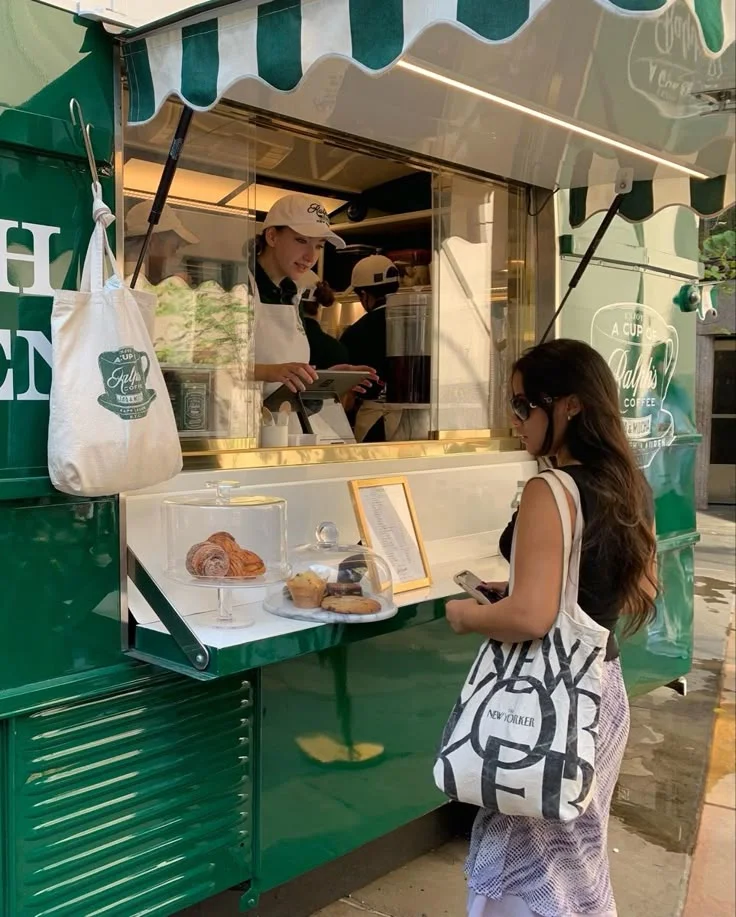
You’ve probably found yourself scrolling through food videos at 2 AM, thinking “I could totally make that better” — and here’s the thing: you probably could, and you could actually make money doing it. Whether you’re the friend everyone calls for dinner party advice or someone who meal-preps like a champion, there’s a surprising number of ways to turn your culinary obsession into cold, hard cash without the nightmare of opening a traditional restaurant.
Start a Home-Based Catering Business
If you’ve ever found yourself frantically texting friends about that incredible lasagna you just pulled from the oven—you know, the one that had your neighbors mysteriously appearing at your doorstep with empty plates—starting a home-based catering business might be your perfect entrepreneurial match. You’re already creating culinary magic; now it’s time to monetize that talent and build something that’s entirely yours.
Home-based catering offers incredible flexibility: you control your schedule, choose your clients, and scale at your own pace. Start small with intimate dinner parties or office lunches—events where your personal touch really shines. The overhead’s minimal compared to restaurant ventures, and honestly, you can test recipes on willing family members before releasing them on paying customers.
Plus, food trends show people increasingly value authentic, homemade experiences over mass-produced alternatives.
Launch a Food Truck or Mobile Kitchen

While home catering lets you build a loyal clientele from your kitchen, food trucks open up an entirely different world where you’re chasing festivals, conquering lunch rushes, and basically turning every day into a culinary adventure on wheels. You’ll need startup capital between $40,000-$200,000 — yeah, it’s not pocket change — but you’re buying mobility, freedom, and the chance to test different markets without committing to a brick-and-mortar lease that’ll haunt your dreams.
The beauty lies in adaptability: struggling downtown? Pack up and hit the business district. Food truck revenues average $290,000 annually according to IBISWorld research, and you’ll control your overhead costs while building brand recognition across multiple neighborhoods. Sure, you’ll deal with permits, health inspections, and the occasional generator breakdown, but you’re creating a moveable feast that follows opportunity.
Open a Specialty Food Products Company
Your grandmother’s secret jam recipe, that hot sauce you’ve been perfecting for years, or those artisanal pickles that disappear from every potluck — these aren’t just crowd-pleasers, they’re potential goldmines waiting to hit grocery shelves nationwide.
You’ll need to navigate FDA regulations (basically food safety rules that keep everyone from getting sick), secure commercial kitchen space, and develop scalable recipes that taste identical whether you’re making ten jars or ten thousand.
Start small: farmers markets, local stores, online sales through platforms like Etsy or your own website.
Research shows specialty food sales reached $170 billion in 2022 — people crave authentic, unique flavors they can’t find in mass-produced products, giving you serious leverage in this booming market.
Create a Meal Prep and Delivery Service
Countless busy professionals, exhausted parents, and health-conscious individuals share the same daily struggle: they want nutritious, delicious meals but lack the time, energy, or culinary skills to make it happen consistently.
You’ve got the perfect opportunity to swoop in as their culinary superhero—minus the cape, obviously. Starting a meal prep and delivery service lets you solve real problems while building serious wealth: the industry’s projected to hit $20 billion by 2027.
You’ll batch-cook portioned meals, focusing on specific niches like keto, plant-based, or family-friendly options. The beauty? You’re not just delivering food—you’re delivering time, health, and peace of mind, creating loyal customers who’ll practically worship your weekly deliveries.
Establish a Personal Chef Service
Though you might think personal chefs are reserved for celebrities and tech billionaires lounging in their Malibu mansions, the reality is far more accessible—and profitable—than you’d imagine. The personal chef industry has exploded as busy professionals, families with dietary restrictions, and aging populations seek customized meal solutions. You’ll command $50-150 per session, preparing multiple meals during each visit—essentially batch cooking with premium pricing.
Your target market includes dual-income households earning $75k+, new parents drowning in dirty diapers and takeout containers, and health-conscious clients managing diabetes or food allergies. Unlike restaurant cooking where you’re chained to a line, you’ll build intimate relationships with clients, crafting menus around their preferences.
Start by obtaining food safety certification, building a portfolio through friends’ dinner parties, and developing signature dishes that showcase your culinary personality.
Start a Food Blog or YouTube Channel
Every day, millions of people scroll through their phones desperately wondering what to cook for dinner—and that’s precisely where your food content empire begins. You’re sitting on a goldmine of culinary knowledge, whether you’re mastering sourdough starters or perfecting your grandmother’s secret sauce recipe.
Food bloggers like Pinch of Yum generate six-figure incomes through sponsored posts, affiliate marketing—earning commissions when readers buy recommended products—and digital cookbook sales. YouTube creators monetize through ad revenue, brand partnerships, and Patreon subscriptions where fans pay monthly for exclusive content.
Start small: document your weekly meal prep disasters (trust me, we’ve all been there), share budget-friendly recipes, or create “cooking with kids” chaos videos. Your authentic voice and unique perspective will attract followers who crave genuine food experiences.
Open a Niche Restaurant or Cafe

While your neighborhood might already have seventeen coffee shops within a three-block radius, there’s still room for the right concept—one that fills a specific gap rather than competing head-to-head with established giants. You’ll want to identify underserved niches: maybe it’s a breakfast-only spot that closes at 2 PM, a plant-based comfort food joint, or a late-night dessert café that stays open past midnight when everything else shuts down.
The key isn’t reinventing the wheel—it’s finding the wheel that doesn’t exist yet. Research shows that 70% of successful restaurants target specific demographics or dietary preferences rather than trying to please everyone. You’re not building another generic bistro; you’re solving a problem that keeps people driving across town for what they actually want.
Launch a Cooking Class Business
Most home cooks secretly harbor dreams of teaching others their signature techniques—whether it’s the way you fold dumplings that actually stay closed during cooking, your grandmother’s method for achieving perfectly flaky pie crust, or that peculiar wrist motion you’ve developed for scrambling eggs that somehow makes them impossibly creamy.
You’re sitting on culinary gold: the cooking class business allows you to monetize your kitchen wisdom while building genuine connections with fellow food enthusiasts.
Start small with weekend workshops in your home kitchen, focusing on specific skills like knife techniques or bread-making fundamentals. As demand grows, you can expand to larger venues, corporate team-building events, or even virtual classes that reach students nationwide—transforming your passion into profit.
Start a Farmers Market Stand
Because there’s something almost magical about the predawn ritual of loading your truck with crates of just-picked tomatoes—their stems still dewy, their scent so intense it practically announces summer’s arrival—the farmers market stand represents one of food entrepreneurship’s most authentic expressions. You’re not just selling produce; you’re curating an experience where customers taste the difference between grocery store mediocrity and your carefully tended heirloom varieties.
Starting requires surprisingly modest capital—around $2,000-$5,000 covers basic equipment, permits, and initial inventory. Research shows farmers markets generate $2.7 billion annually, with vendors averaging $1,200 per market day.
You’ll develop genuine relationships with regulars who’ll specifically seek your booth, creating customer loyalty that Amazon can’t replicate. Plus, there’s undeniable satisfaction in watching someone’s face light up after biting into your perfect peach.
Create a Food Subscription Box Service
As you scroll through your phone at 2 AM, mindlessly adding artisanal hot sauces and single-origin chocolate bars to yet another online cart, you’re witnessing the subscription box economy’s $22.7 billion empire—and honestly, you could claim your piece of this recurring revenue goldmine with a food subscription service that delivers curated culinary discoveries straight to doorsteps.
Your specialty becomes the differentiator: regional specialties from forgotten corners of Italy, plant-based protein innovations, or heritage grains that make sourdough enthusiasts weep with joy. You’ll source products, negotiate wholesale pricing, and design unboxing experiences that transform Tuesday deliveries into monthly celebrations.
The subscription model creates predictable cash flow—customers pay upfront while you fulfill later, fundamentally giving you an interest-free loan to scale operations.
Open a Ghost Kitchen for Delivery Apps
While subscription boxes build long-term customer relationships through monthly anticipation, ghost kitchens capture the immediate gratification market—those hangry moments when you need pad thai delivered in thirty minutes, not thirty days.
You’ll operate from a commercial kitchen without dining space, slashing overhead costs by 60% compared to traditional restaurants. Ghost kitchens—also called virtual restaurants—exist solely for delivery apps like DoorDash and Uber Eats, where profit margins can hit 15-20% versus the typical 3-5% for brick-and-mortar establishments.
Your strategy? Test multiple cuisine concepts simultaneously: maybe Korean BBQ bowls under one brand, gourmet mac-and-cheese under another. Data drives everything—if your bulgogi outsells your carbonara three-to-one, you’ll pivot faster than a line cook dodging health inspectors. This model transforms food entrepreneurship into rapid experimentation rather than expensive gambling.
Conclusion
You’ve got endless possibilities ahead—whether you’re flipping pancakes from a food truck, crafting artisanal sauces in your kitchen, or teaching couples how to make pasta without setting off smoke alarms. Each path offers unique rewards: flexible schedules, creative expression, and the chance to turn your culinary passion into profit. Don’t overthink it; pick one that excites you most, start small, and let your love for food guide the journey forward.





Leave a Reply